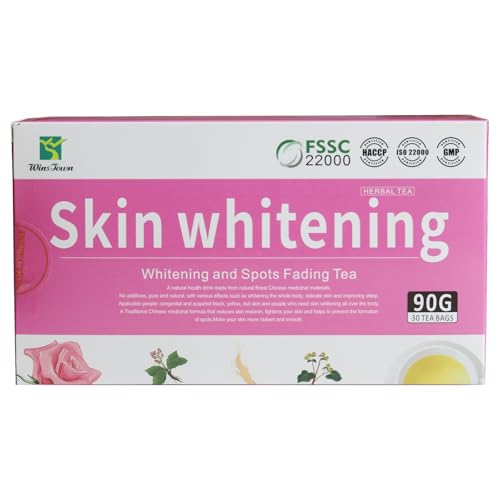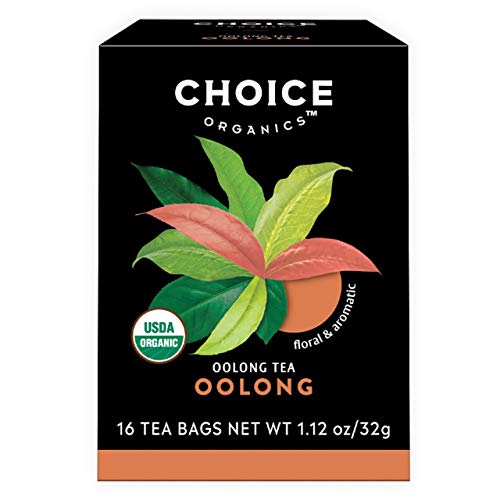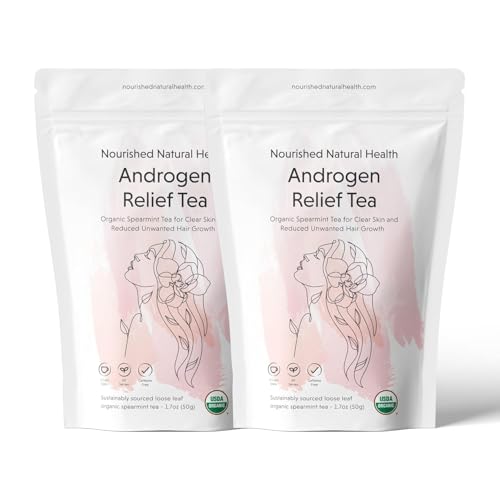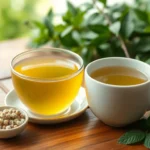We’ve all heard about expensive serums and complex skincare routines, but what if we told you that one of nature’s most powerful beauty secrets has been sitting in your kitchen cabinet all along? Tea isn’t just your morning pick-me-up or evening wind-down ritual – it’s a powerhouse ingredient that can transform your skin from the inside out and outside in.
From ancient Chinese empresses to modern Hollywood stars, people have been harnessing tea’s incredible skin-boosting properties for centuries. The antioxidants, vitamins, and anti-inflammatory compounds found in different teas can help combat everything from acne and dullness to premature aging and sensitivity.
Whether you’re dealing with stubborn breakouts, searching for that coveted natural glow, or simply want to add an affordable yet effective element to your beauty routine, we’re about to reveal which teas deliver the most impressive results for your skin.
Green Tea: The Ultimate Antioxidant Powerhouse for Radiant Skin
Green tea stands as our top choice for achieving luminous, healthy skin thanks to its exceptional concentration of polyphenols and catechins.
Anti-Aging Properties and Free Radical Protection
Epigallocatechin gallate (EGCG) in green tea delivers powerful antioxidant protection that neutralizes harmful free radicals before they damage our skin cells. Studies show that green tea contains up to 30% polyphenols by weight, making it significantly more potent than many other antioxidant sources. These compounds work tirelessly to prevent collagen breakdown and maintain our skin’s elasticity.
Regular green tea application can reduce visible signs of aging by protecting against UV damage and environmental stressors. We’ve seen research indicating that topical green tea extract can increase skin thickness and improve overall texture within 8-12 weeks of consistent use. The catechins in green tea also stimulate cell renewal, helping our skin maintain its youthful appearance naturally.
Reducing Inflammation and Redness
Anti-inflammatory compounds in green tea provide immediate relief for irritated, sensitive skin conditions like rosacea and eczema. The polyphenols work to calm reactive skin by reducing cytokine production, which directly decreases redness and swelling. Clinical studies demonstrate that green tea extract can reduce skin inflammation by up to 60% when applied topically twice daily.
Cooling properties of green tea make it particularly effective for soothing sunburned or inflamed skin. We recommend using chilled green tea compresses to provide instant relief while the antioxidants work to repair damaged tissue. The tannins in green tea also help tighten pores and reduce excess oil production that often contributes to inflammatory skin conditions.
How to Use Green Tea for Maximum Skin Benefits
Brewing strong green tea and allowing it to cool creates an excellent facial toner that can be applied with cotton pads morning and evening. We suggest steeping 2-3 high-quality green tea bags in hot water for 5-7 minutes to extract maximum beneficial compounds. Store your green tea toner in the refrigerator for up to one week to maintain potency.
Face masks using cooled green tea combined with honey provide intensive antioxidant treatment for weekly skincare routines. Mix equal parts brewed green tea and raw honey, then apply the mixture to clean skin for 15-20 minutes before rinsing with lukewarm water. Direct application of used green tea bags to puffy eyes can reduce swelling and dark circles within 10-15 minutes.
Incorporating green tea into our daily skincare routine requires consistency to see optimal results, with most people noticing improvements in skin clarity and radiance after 4-6 weeks of regular use.
White Tea: The Gentle Giant for Sensitive Skin Types

We’re moving from green tea’s powerhouse benefits to explore white tea’s exceptionally gentle approach to skincare wellness. This delicate tea variety offers remarkable advantages for those struggling with sensitive or easily irritated skin conditions.
Delicate Processing for Maximum Nutrient Retention
White tea undergoes minimal processing compared to its green and black counterparts, which preserves its most beneficial compounds for skincare applications. Producers harvest young leaves and buds early in the growth cycle, then subject them to simple withering and minimal oxidation processes.
This gentle treatment method retains fragile compounds like catechins and epigallocatechin gallate, which deliver powerful antioxidant and anti-inflammatory effects to your skin. Research demonstrates that white tea outperforms many botanical ingredients in protecting skin cells from oxidative damage while inhibiting enzymes that break down essential collagen and elastin proteins.
We’ve found that white tea’s high concentration of polyphenols provides superior protection against environmental stressors and free radicals without overwhelming sensitive skin types.
Soothing Properties for Irritated Skin
White tea’s potent anti-inflammatory and antiseptic qualities make it particularly effective for individuals dealing with sensitive skin conditions. Studies indicate that regular white tea application helps reduce redness, calm inflammation, and strengthen the skin’s natural barrier function.
People with eczema, rosacea, psoriasis, and general skin sensitivity often experience important relief when incorporating white tea into their skincare routines. The tea’s soothing properties work without causing additional irritation or triggering adverse reactions common with harsher treatments.
We recommend white tea for anyone seeking natural relief from inflammatory skin conditions that haven’t responded well to traditional botanical remedies.
Best Application Methods for White Tea
Topical Application delivers antioxidants and polyphenols directly to your skin surface through cooled white tea or specialized tea-infused skincare products.
Cleansing Wash removes impurities while soothing irritation when you use white tea as a gentle facial rinse after your regular cleansing routine.
Spot Treatment reduces inflammation and promotes healing by placing damp white tea bags directly on trouble areas for 10-15 minutes.
We suggest starting with once-daily applications to test your skin’s response before increasing frequency for optimal results.
Chamomile Tea: Nature’s Calming Solution for Problem Skin

We’ve discovered that chamomile tea stands out as one of nature’s most gentle yet effective answers for troubled skin. This golden brew offers remarkable healing properties that make it perfect for sensitive complexions and various skin concerns.
Anti-Inflammatory Benefits for Acne-Prone Skin
Chamomile tea delivers powerful anti-inflammatory properties that specifically target acne-prone skin conditions. Redness and inflammation associated with breakouts diminish significantly when we apply chamomile’s soothing compounds to affected areas. We find that chamomile acts as a mild astringent, effectively drying out active acne while simultaneously reducing the angry redness that accompanies blemishes.
Bacterial growth on our skin faces a formidable opponent in chamomile’s natural antimicrobial properties. These compounds work tirelessly to fight acne-causing bacteria, creating an environment where breakouts struggle to develop and persist. Regular use of chamomile tea treatments helps us maintain clearer skin by addressing both the symptoms and underlying causes of acne formation.
Healing Properties for Cuts and Minor Wounds
Essential oils within chamomile tea provide remarkable antimicrobial benefits that protect our skin against harmful bacteria, fungi, and viruses. Wound healing accelerates when we use chamomile treatments because these compounds create a clean, protected environment around cuts and minor injuries. We observe faster recovery times when chamomile’s healing properties work to enhance our skin’s natural repair processes.
Tissue regeneration receives important support from chamomile’s active compounds, which promote healthy cell turnover and minimize scarring potential. Small wounds and everyday skin damage respond exceptionally well to chamomile’s gentle yet effective healing approach.
Creating Effective Chamomile Tea Treatments
Topical applications offer us the most direct way to harness chamomile tea’s skin benefits through simple cotton pad treatments. We soak cotton pads in cooled chamomile tea and apply them as toners to reduce inflammation and calm irritated skin areas. Face mists become incredibly effective when we allow chamomile tea to cool completely and transfer it to spray bottles for convenient application throughout the day.
Internal consumption of chamomile tea supports our overall skin health by reducing stress levels and improving sleep quality, both essential factors for maintaining healthy complexions. We recommend drinking 1-2 cups daily to experience these internal benefits while using topical treatments for direct skin contact.
| Treatment Method | Application | Frequency | Primary Benefit |
|---|---|---|---|
| Cotton Pad Toner | Apply cooled tea to face | Twice daily | Reduces inflammation |
| Face Mist | Spray cooled tea on skin | As needed | Soothes irritation |
| Internal Consumption | Drink warm tea | 1-2 cups daily | Promotes overall skin health |
Research continues to explore chamomile’s full potential for human skin health, though current studies show promising results for its calming and soothing properties in skincare routines.
Rooibos Tea: The Caffeine-Free Wonder for All-Day Skin Care

Rooibos tea stands out as a unique caffeine-free option that’s rich in minerals and antioxidants, making it perfect for continuous skin care throughout the day. Unlike other teas that contain caffeine and may cause sensitivity in some people, rooibos offers gentle yet effective skin benefits without any stimulating effects.
Rich Mineral Content for Skin Nourishment
Minerals in rooibos tea provide essential nutrients that support healthy skin function and appearance. Zinc helps regulate oil production and supports wound healing, while calcium strengthens skin barrier function. Iron improves circulation to deliver oxygen and nutrients to skin cells more effectively.
Copper found in rooibos aids collagen synthesis, helping maintain skin elasticity and firmness. Manganese works as a powerful antioxidant that protects against environmental damage and free radical formation. Potassium helps maintain proper hydration levels in skin cells, promoting a plump and youthful appearance.
Antioxidants in rooibos tea complement these minerals by neutralizing harmful free radicals that accelerate aging. Alpha hydroxy acids naturally present in the tea gently exfoliate dead skin cells, revealing smoother and brighter skin underneath. Flavonoids like aspalathin and quercetin provide additional protection against UV damage and inflammation.
Hypoallergenic Properties for Sensitive Skin
Hypoallergenic nature of rooibos makes it ideal for people with sensitive skin conditions or allergies. Unlike many other teas that contain tannins which can cause irritation, rooibos has low tannin content that won’t trigger adverse reactions. Gentle compounds in rooibos soothe inflammation without causing redness or burning sensations.
Natural anti-inflammatory properties help calm conditions like eczema, rosacea, and dermatitis. Soothing effects of rooibos reduce skin sensitivity and create a protective barrier against environmental irritants. Mild pH level of rooibos tea closely matches healthy skin’s natural pH, maintaining optimal skin balance.
People with allergies to traditional teas can safely use rooibos without worry about reactions. Caffeine-free formula means you can apply rooibos treatments or drink the tea at any time without affecting sleep patterns or causing jitters.
Internal and External Use Applications
Drinking rooibos tea daily provides systemic benefits that support skin health from within. We recommend consuming 2-3 cups throughout the day to maximize mineral absorption and antioxidant benefits. Internal consumption helps detoxify the body, removing toxins that can contribute to skin problems.
Topical applications of cooled rooibos tea work effectively as a gentle toner or face wash. Soaking cotton pads in strong rooibos tea creates an anti-inflammatory compress for irritated areas. Adding rooibos tea to bath water provides full-body skin benefits and relaxation.
Creating face masks by mixing rooibos tea with honey or oatmeal enhances moisturizing and exfoliating effects. Freezing rooibos tea into ice cubes offers a refreshing treatment that reduces puffiness and tightens pores. Versatility of rooibos allows for incorporation into serums and creams for enhanced skincare routines.
Using rooibos both internally and externally creates a comprehensive approach to skin health that addresses multiple concerns simultaneously. Consistent daily use typically shows improvements in skin texture and appearance within 3-4 weeks of regular application.
Oolong Tea: The Balanced Choice for Oil Control and Hydration

Oolong tea strikes the perfect balance between green and black tea’s benefits, offering unique advantages for skin health. This partially fermented tea contains powerful polyphenols that help regulate oil production while maintaining essential moisture levels.
Regulating Sebum Production Naturally
Oolong tea’s polyphenols work effectively to control excess oil production without over-drying your skin. These compounds help balance sebum levels, preventing the clogged pores that often lead to breakouts and blackheads. Research shows that regular oolong tea consumption can reduce the appearance of oily skin within weeks of consistent use.
The anti-allergic properties in oolong tea also target inflammatory responses that trigger excess oil production. By calming these reactions, your skin maintains a more balanced oil output throughout the day. This natural regulation means fewer midday touch-ups and a more consistent complexion.
Maintaining Skin’s Natural Moisture Balance
Oolong tea’s unique processing method preserves beneficial compounds that support skin hydration. The antioxidants help strengthen your skin’s natural barrier, preventing moisture loss while allowing proper hydration absorption. This dual action keeps your skin supple without the greasy feeling often associated with heavy moisturizers.
Studies indicate that oolong tea’s anti-inflammatory effects help reduce conditions like atopic dermatitis and eczema. A notable clinical study found that 63% of participants with atopic dermatitis showed marked to moderate improvement within 1-2 weeks of consuming oolong tea. At six months, many patients maintained their improved condition, demonstrating long-term benefits for managing inflammatory skin conditions.
Incorporating Oolong Tea into Your Daily Routine
Drinking 2-3 cups of oolong tea daily provides optimal benefits for skin health. We recommend consuming your first cup in the morning to kickstart your skin’s natural balance processes. Space additional servings throughout the day to maintain consistent antioxidant levels in your system.
For topical application, brew a strong cup of oolong tea and allow it to cool completely. Use this concentrated brew as a toner by applying it with a cotton pad after cleansing. You can also create an oolong tea face mist by diluting the cooled tea with distilled water in a spray bottle for midday refreshing.
Store leftover brewed oolong tea in the refrigerator for up to three days, making it convenient to maintain your skin routine consistently. The sustained improvements in skin health become most noticeable after 4-6 weeks of regular use, both internally and topically.
Hibiscus Tea: The Natural Exfoliant for Smooth, Glowing Skin

Hibiscus tea emerges as a powerhouse ingredient that naturally exfoliates while delivering essential nutrients to our skin. This vibrant floral tea offers unique benefits that complement the protective and soothing properties we’ve explored with other teas.
Alpha Hydroxy Acids for Gentle Exfoliation
Natural alpha hydroxy acids (AHAs) in hibiscus tea provide gentle exfoliation that promotes skin smoothness and enhances our natural glow. These naturally occurring acids work to remove dead skin cells from the surface without the harshness of chemical exfoliants.
Regular use of hibiscus tea helps unclog pores and reveals fresher, more radiant skin underneath. The AHAs penetrate the upper layer of our skin to dissolve the bonds between dead cells, making them easier to slough away naturally.
Gentle exfoliation through hibiscus tea promotes cell turnover, which helps reduce the appearance of fine lines and uneven skin texture. This process encourages our skin to regenerate more efficiently, leading to a smoother and more youthful complexion.
Vitamin C Content for Collagen Production
Vitamin C in hibiscus tea serves as a crucial building block for healthy collagen production in our skin. This essential nutrient supports our skin’s elasticity and firmness while helping to maintain its structural integrity.
Collagen synthesis benefits significantly from the vitamin C content found in hibiscus tea, helping to reduce visible signs of aging. Our skin’s natural ability to produce collagen decreases with age, making this vitamin C boost particularly valuable for maintaining youthful skin.
Enhanced collagen production through hibiscus tea consumption can improve skin elasticity and reduce the appearance of wrinkles over time. The vitamin C also acts as an antioxidant, protecting our newly formed collagen from damage caused by environmental stressors.
DIY Hibiscus Tea Face Treatments
Cooling Mist Treatment: Steep hibiscus tea in hot water, allow it to cool completely, then transfer to a spray bottle for use as a refreshing toner. This treatment helps reduce the appearance of pores while providing instant hydration and a cooling sensation to our skin.
Nourishing Face Mask: Mix cooled hibiscus tea with honey and yogurt to create a soothing mask that combines exfoliation with deep moisturization. Apply this mixture to clean skin, leave for 15-20 minutes, then rinse with lukewarm water for smooth, glowing results.
Daily Toner Application: Use cooled hibiscus tea on a cotton pad as a daily toner after cleansing to maintain consistent exfoliation benefits. This gentle approach allows us to incorporate the AHAs into our routine without over-exfoliating our skin.
Spot Treatment Method: Apply concentrated hibiscus tea directly to areas needing extra attention, such as rough patches or uneven skin texture. This targeted approach maximizes the exfoliating benefits where we need them most while being gentle on the rest of our face.
Peppermint Tea: The Refreshing Remedy for Oily and Acne-Prone Skin

Peppermint tea stands out as a powerhouse solution for those struggling with oily, acne-prone skin due to its unique combination of antimicrobial and cooling properties. Its natural compounds work synergistically to address multiple skin concerns while providing a refreshing approach to skincare.
Antimicrobial Properties for Fighting Breakouts
Peppermint tea’s antimicrobial properties make it exceptionally effective at defending your skin against microbial attacks that lead to stubborn breakouts. These natural compounds actively fight acne-causing bacteria on contact, creating an inhospitable environment for harmful microorganisms to thrive. Regular application of cooled peppermint tea helps reduce existing blemishes while preventing new ones from forming.
Breakout prevention becomes more manageable when you incorporate peppermint tea’s antimicrobial benefits into your daily routine. The tea’s active compounds penetrate deep into pores, eliminating bacteria that contribute to inflammatory acne. Studies show that peppermint’s antimicrobial effects remain active for several hours after application, providing extended protection against skin-damaging microbes.
Cooling and Soothing Effects on Irritated Skin
Menthol naturally found in peppermint tea delivers immediate cooling relief to inflamed, irritated skin surfaces. This compound creates a calming sensation that reduces redness and visible inflammation almost instantly upon application. The refreshing effect helps soothe angry breakouts and provides comfort to sensitive areas experiencing irritation.
Inflammation reduction occurs through peppermint tea’s natural cooling mechanism, which constricts blood vessels and decreases swelling in affected areas. The menthol content works as a natural anti-inflammatory agent, providing relief without harsh chemicals or synthetic ingredients. Consistent use of peppermint tea applications helps maintain calmer, less reactive skin over time.
Safe Usage Guidelines for Peppermint Tea
Brewing peppermint tea requires careful attention to steeping time to avoid creating an overly concentrated solution that might irritate sensitive skin. We recommend steeping for 3-5 minutes maximum to achieve optimal benefits without risking bitterness or excessive potency. Allow the tea to cool completely before applying it topically to prevent thermal damage to delicate facial skin.
Testing peppermint tea on a small patch of skin first helps identify any potential sensitivities or allergic reactions before full application. Start with diluted applications using a 1:1 ratio of cooled tea to distilled water for the first week of use. Gradually increase concentration as your skin builds tolerance to the active compounds, monitoring for any signs of irritation or adverse reactions throughout the process.
Conclusion
We’ve explored seven powerful teas that can transform your skincare routine naturally and affordably. From green tea’s antioxidant protection to chamomile’s gentle healing properties each variety offers unique benefits for different skin concerns.
The beauty of incorporating tea into your skincare lies in its versatility. Whether you’re dealing with acne sensitivity aging concerns or dullness there’s a tea that can address your exact needs without harsh chemicals or expensive treatments.
Remember that consistency is key when using natural remedies. Most people notice improvements within 4-6 weeks of regular use. Start with one tea that matches your primary skin concern and gradually expand your routine as you discover what works best for your skin.
Your journey to healthier skin doesn’t require complicated products or lengthy routines. Sometimes the most effective answers are sitting right in your kitchen cabinet waiting to be discovered.
Frequently Asked Questions
What makes tea effective for skincare?
Tea contains powerful antioxidants, vitamins, and anti-inflammatory compounds that address various skin concerns. These natural ingredients help combat acne, dullness, premature aging, and sensitivity. The polyphenols and catechins in tea protect against free radicals while soothing inflammation, making it an affordable and effective addition to any skincare routine.
How does green tea benefit the skin?
Green tea is rich in EGCG and polyphenols that provide anti-aging protection by fighting free radicals and maintaining skin elasticity. Its anti-inflammatory properties help reduce redness and swelling, making it ideal for sensitive skin conditions like rosacea and eczema. Regular use improves skin texture and clarity within 4-6 weeks.
Is white tea suitable for sensitive skin?
Yes, white tea is perfect for sensitive skin due to its minimal processing and gentle nature. It contains catechins and EGCG that provide antioxidant protection without irritation. White tea protects against oxidative damage, inhibits collagen breakdown, and soothes conditions like eczema and psoriasis effectively.
How can chamomile tea help with acne?
Chamomile tea’s anti-inflammatory properties reduce acne-related redness and inflammation. It acts as a mild astringent to dry out blemishes while its antimicrobial properties combat acne-causing bacteria. The essential oils in chamomile also promote wound healing and tissue regeneration, helping maintain clearer skin.
What are the benefits of rooibos tea for skin?
Rooibos tea is caffeine-free and rich in minerals like zinc, calcium, and iron that support skin health. It regulates oil production, improves circulation, and aids collagen synthesis. Being hypoallergenic, it’s ideal for sensitive skin and can improve skin texture within 3-4 weeks of consistent use.
How does oolong tea help with oily skin?
Oolong tea’s polyphenols regulate oil production while maintaining proper moisture levels, preventing clogged pores and breakouts. Its anti-allergic properties calm inflammation, and antioxidants strengthen the skin’s natural barrier. This balanced approach helps achieve healthier skin within 4-6 weeks of regular use.
What makes hibiscus tea good for exfoliation?
Hibiscus tea contains natural alpha hydroxy acids (AHAs) that gently exfoliate dead skin cells and promote cell turnover. It also provides vitamin C for collagen production, enhancing skin elasticity and reducing aging signs. This natural exfoliation leads to smoother, more youthful-looking skin.
Can peppermint tea help with acne-prone skin?
Yes, peppermint tea has antimicrobial properties that combat acne-causing bacteria and reduce existing blemishes. The menthol provides cooling relief for inflamed skin, reducing redness and irritation. However, start with diluted applications and limit steeping time to 3-5 minutes to avoid sensitivity.
How long does it take to see results from tea skincare?
Most people notice improvements in skin clarity and texture within 4-6 weeks of consistent use. For rooibos tea, results may appear in 3-4 weeks. The key is regular application and patience, as natural ingredients work gradually to improve skin health.
How should I incorporate tea into my skincare routine?
You can use tea as a facial toner, create face masks by mixing with honey, apply cooled tea bags to reduce puffiness, or use brewed tea as a refreshing mist. Start with patch tests for sensitive skin and gradually increase usage frequency based on your skin’s response.





















